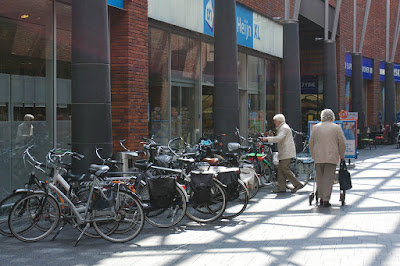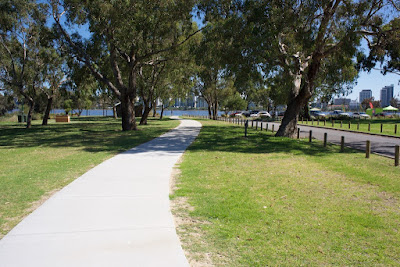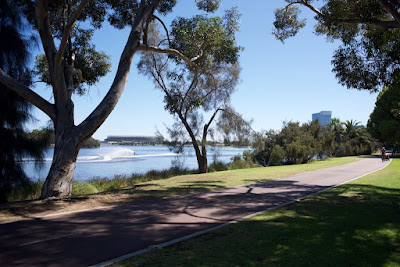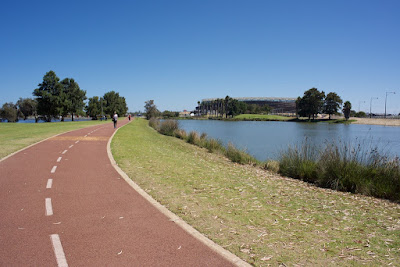It's time for Perth to embrace the three-mode transport approach that makes for a more socially connected, happier and healthier city.
While cities around the world are lowering speed limits and tearing down freeways, Perth continues to build a road network that facilitates the movement of only two modes - car and foot.
 |
| Most parents would love for their children to ride home from school on a safe path. |
People on bikes are currently expected to share with motor traffic or share with pedestrians, and the conflict problems are obvious.
Designing for a third mode, the bicycle, not only improves mobility options, it can deliver a number of positive social benefits too. This is seen most notably in the Netherlands, which since the 1970s has adopted the gold standard of this three-mode approach.
 |
| It's about changing our thinking from two modes to three. |
 |
| The Dutch have done it and their streets function in a way that is fairer for all people. |
Better for children, seniors and those with disabilities
Thanks to the network of separate bike paths and low-speed neighbourhood streets, Dutch children are able to have independent mobility by the time they are eight or nine.
Meanwhile in Australia, the majority of our children have restricted mobility and must wait to be taken places by car. Being a parent in Australia also means being a taxi driver.
The three-mode system also allows Dutch seniors to have independent mobility without the stress of driving. They can do their own errands and are able to have a more active social life than older Australians.
 |
People with disabilities also benefit from bike-friendly street design. Smooth, continuous paths designed for bicycles are also ideal for wheel chairs and other motorised mobility aids.
Enlightened cities around the world are cottoning on and are progressively installing separated bike infrastructure. New York, London, Chicago and even Auckland increasing understand the importance of providing an option of bicycle riding for all people.
Failed system
Our Western Australian state and local governments want more people on bicycles but the current strategies are not working.
A new approach is needed that targets the 56 per cent of the population who have bikes in the shed but will not use their bikes for transport unless there is a dramatic change to the urban environment.
The majority of people will simple not ride a bike next to motor vehicles travelling at 50 or 60 km/h.
 |
| Lemnos Street near Shenton College. |
For example, the on-road bicycle lane next to Shenton College does not get used. The students riding bikes prefer the safer option of being on the footpath (legal but not ideal).
Change in thinking
The issue is not about Australia having enough space or money. It's about changing our thinking from two modes to three.
The Dutch have done it and their streets function in a way that is fairer for all people.
Once we stop thinking about the bicycle as just a piece of sporting equipment and remember our history of using it for transport, we can stop having the pointless debates about a minority group called 'cyclists' and get on with providing transport options for the majority of people.
In Western Australia, only 1.3 per cent of people ride a bike to work or school, yet there is at least one working bike in 61 per cent of households.
Obviously most people, even when they own a bike, do not want to travel to work, school or the shops wearing Lycra and a helmet, in single-file next to fast moving motor vehicles. That's the main option available right now.
Most parents would love for their children to be able to ride home from school, relaxed, chatting with a friend, on a safe path that's separated from motor vehicles. The kids want it too.
Perth, it's time to stop taking baby steps with infrastructure and treat the bicycle as an efficient transport option for all people.
Tim Burns writes the Bicycle Perth blog.
This article was recently published by WA Today using alternative photographs (see below). I have re-published it here using my original photographs which are more relevant to the content. My images were supplied to WA Today but they decided not to use them.
The article is based my earlier "Australia, start counting to-three" blog post.























































